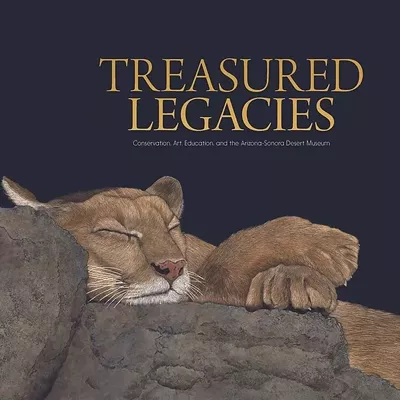Nor have I witnessed videotaped beheadings or hostage pleas for release or TV footage of mangled Iraqi bodies. I'm no Luddite, no purveyor of sunny-only stories. And whether I merely heard or read about them, all these gruesome pictures exist visually in my psyche. After Sept. 11, images became too much for me: those planes, careening again and again into skyscrapers, black smoke billowing against a magnificent cerulean sky.
David Levi Strauss admits he loves images, even those of the grotesque, the tragic, the atrocious. He wouldn't choose to be without them. They're a poison, he says.
Indeed.
His critical writing is often compared to Susan Sontag's--both her mid-'70s foray, On Photography, and her final book last year, Regarding the Pain of Others. Both writers find beauty in sheared-off buildings; as Sontag has said, they're almost as eloquent as bodies in the streets of Kabul, in Sarajevo, on 16 acres in lower Manhattan.
"Though her early book was reviled, for me, it opened up the possibility for what I do. She was an intellectual, a writer dealing with photography as a thing in the world--not an isolated art phenomenon," explains Strauss of Sontag's influence.
He's the author of several books including Between Dog and Wolf: Essays on Art and Politics published in 1999, and his 2003 Between the Eyes: Essays on Photography and Politics. In last fall's Bomb conversation with writer Hakim Bey, Strauss explained his concern for the dialectic, an interest in more than basic liminality--no doubt, considering his proclivity for the word "between" in his book titles. Relationships of politics to aesthetics are as important as those of words to images.
"If we get how these images work, then they might have less manipulative effect on us. The only way I know how to do it is to slow it down and see what the relationships are between things," says Strauss from his home in New York's Hudson Valley. He adds, "The whole idea of art photography was a mistake, a strange, quirky eddy in the history of images."
Strauss is both a poet and a critic--a not-dissimilar acrobatics of seeing the world and translating it into words to be consumed aesthetically or intellectually. His latest collection of critical writing microscopes the work of photographers but also zooms in on propaganda and illusion. Strauss studies the imagery of exiled Brazilian Sebastião Salgado, whose photographs gorgeously reveal poverty. He revels in Chilean photographer Alfredo Jaar's various Rwanda-themed projects, one of which replaces the images of atrocities simply with the word "Rwanda" reflected in light boxes throughout a commissioned Swedish public art project.
There are other photographers Strauss studies: the precocious Francesca Woodman, the scatological Joel-Peter Witkin, the heroic photojournalists covering Central America in the '80s. His knife-pen bisects the issues behind the images, but also how we are manipulated by them.
"Central to my writing is aesthetics and politics. I will not make a choice between beauty and justice when beauty adorns everything--virtue, vice, horror."
For Strauss, beauty can be a call to action, like the famed André Breton sentiment: Beauty will be compulsive, or it will not be.
"The principal thing is transformation. It's the anesthetic that numbs. Leftists in the '70s made the mistake of thinking what artists do is a politically lesser activity."
With numbness comes fascism and ultimately very dangerous times, says Strauss.
"Things have changed since Sept. 11 as far as the image complex," he explains of the relationship of images to words. "It blew a big hole in the U.S. psyche that allowed almost anything to come through. It's just our bad luck that Bush and company happened to be in charge when it happened."
The photographability of tragic events that day still piques Strauss' interest. How ironic, he wonders, that a conference of Magnum photographers landed there the day before. "To have all these far-flung photographers in New York City with the bluest sky anyone can remember. That fireball against it made for amazing images. For me, it reset the clock."
Before that day, he says, there was a critique of representation, particularly of documentary and still images. But afterwards, we jumped ahead of a timing mechanism that made us wonder even if the documentation of such tragedy was real. "People were standing in Manhattan, in real time, relatively close to the tragedy, but they were watching it broadcast on TV in store windows."
He adds, "The images of Sept. 11 were undeniably beautiful, a mushroom-cloud kind of beauty. This is beauty regardless of virtue and ethics."
Strauss says the old image rhetoric, going back to World War II, has been resurrected by our current administration; Bush uses it astonishingly. He points to ubiquitous images of the toppling of the Saddam statue, saving Private Lynch and the discovery of Saddam in the spider hole as examples.
The propaganda works, regardless of the facts, admits Strauss, even after people began upending the connections between Sept. 11 and the invasion of Iraq. "It didn't really matter. It fit into a long history of photos of tyrants being pulled down. That to me verified what I'd been researching about images and how they work on a mass scale if the manipulators tap into it."
And yet, the Abu Ghraib photographs snuck onto our screens and across our tabloids. Strauss explains they marked a failure of the spin the Bush administration is driving--this despite the corporate monopoly of media in this country.
"The Republicans were blind-sided by Abu Ghraib. Those images of prisoner abuse were not squashed, because Seymour Hirsch of the New Yorker and Dan Rather are not owned by Bush."
Not yet.







